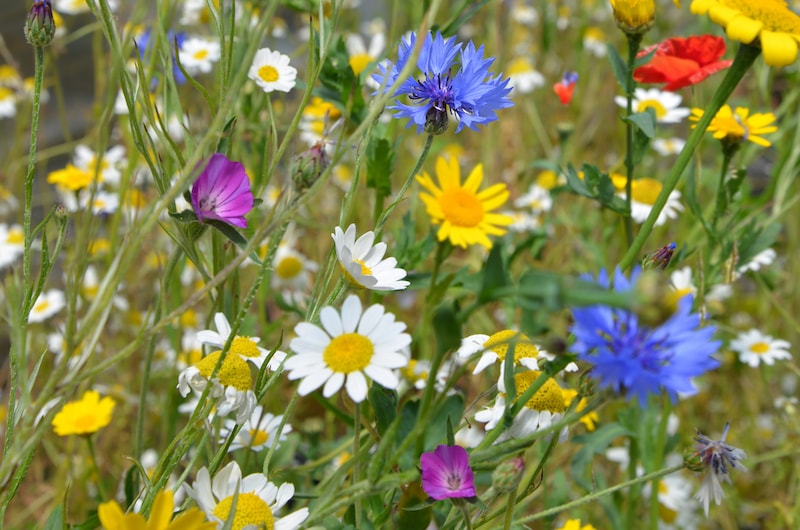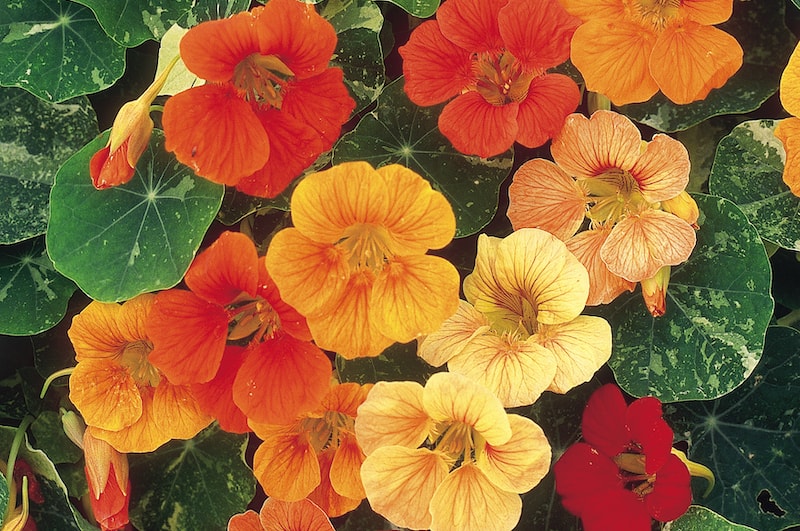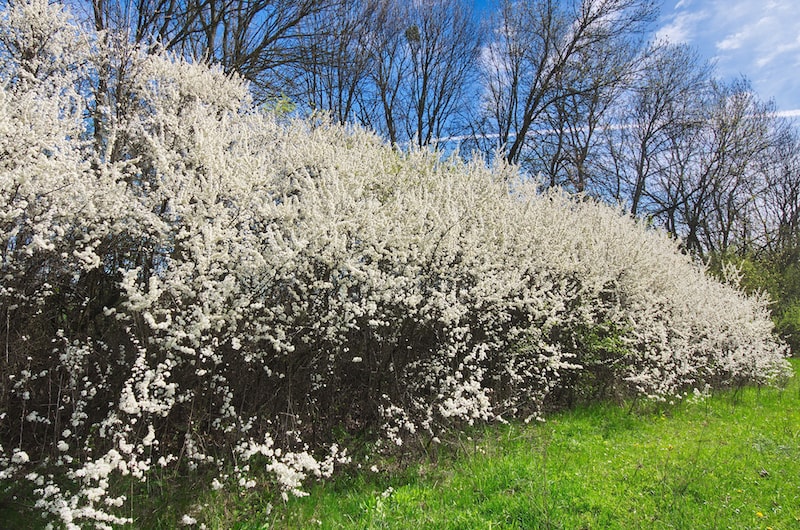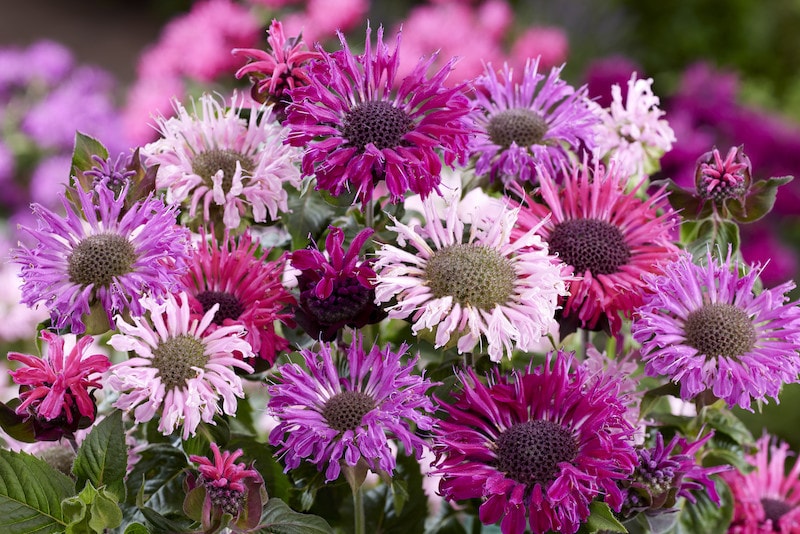With so many of our native birds, insects and mammals in decline due to habitat loss, creating wildlife-friendly spaces has never been more important. To help you welcome wildlife to your garden, we asked our favourite bloggers to share their top tips. From ‘rewilding’ large spaces to redesigning a border or choosing the best plants for balconies, there’s something for everyone here.
Browse our seeds for bees and butterflies and visit our collection of plants for wildlife for inspiration.
Contents:
- How to plan a wildlife-friendly garden
- Best flowers for wildlife
- Best climbers and shrubs for wildlife
- Best hedges and trees for wildlife
- Other plants to support wildlife in your garden
How to plan a wildlife-friendly garden

Image: Wildflower Mix Seeds for Patio Pots from Suttons
“Always measure your space and draw up your design first – don’t try and wing it!” Sound advice from Garden Ninja Lee Burkhill, whose Wildlife Garden Design Guide is a fantastic source of tips and tricks for welcoming birds, insects and animals. Lee’s design begins with trees which “lock up carbon” and provide a home for all sorts of wildlife. His video series also includes specific tips on wildlife-friendly shrubs and perennials that would work in any sized garden.
Whether you introduce your own choice of plants or simply leave an area of your garden to go wild, “the old rule ‘Right Plant, Right Place’ applies just the same,” explains Carol Bartlett at The Sunday Gardener. In other words, it’s important to choose the right plants for the type of garden you have – sandy or boggy, sunny or shady. Although Carol’s wildlife garden is largely left to its own devices, she wisely keeps vigorous nettles and brambles in check so they can be of benefit to birds and insects without taking over the other flowers. Read her full article for specific tips.
Leave just a small area of your garden untended and you’ll be surprised by the variety of wildlife it attracts! As garden designer Karen Davis explains, an overgrown lawn can provide a safe place for birds to forage, as well as shelter for amphibians and invertebrates in hot weather. Specialising in sustainable gardens, follow her at @karendavisgardendesign for tonnes of inspirational ideas.
Over at @jo__pratensisgardens, landscape consultant Jo McKerr urges you to embrace soft edges rather than sharp lines when designing your garden. “Softly managed edges” allow for a more gradual transition between habitats, which encourages a wider variety of critters to visit. Not sure what she means? Check out this photo of wildflowers that beautifully blur the lines.
Best flowers for wildlife

Image: Alyssum Seeds ‘Snow Carpet’ from Suttons
Over at Wildlife Gardening, Jenny has some wonderful ideas for growing wildlife-friendly plants in containers. For example, try contrasting golden marjoram with bright red nasturtiums to attract bees. Or planting “Verbena bonariensis with Gaura lindheimeri in a large container for an airy combination of white and purple that will have the butterflies flocking to your pots”. Read her full article for more colourful combinations.
Have you ever seen a pink bee? When allotment gardener Maria Thornton from @marias.plot spotted a candy-coloured pollinator she was intrigued to find out more. As it turned out, it had been visiting this beautiful pink Lavatera and was “so heavily laden it could hardly stay airborne”! A clear bee magnet.
The humble ladybird is an expert at keeping destructive pests such as aphids under control, which is good news for your plants. Patient Gardener Daniel says that ladybirds are particularly attracted to the pollen-rich blooms of marigolds and sweet alyssum. And it’s win-win as these lovely flowers also “add beauty and diversity to your garden.” Read his full article for more tips on attracting ladybirds to your garden.
If you’re looking for easy ways to make your garden wildlife-friendly, take a look at Catherine’s comprehensive list of ideas over on the Growing Family website – there are 50 to choose from! She recommends growing wildflowers, which “provide food for pollinating insects, wild birds and bats, as well as dense shelter for other small animals”. Sunflowers are also a great idea – their pollen and nectar attract insects, while “the seeds provide a feast for garden birds and squirrels.” Although it’s tempting to pull up dandelions, these are an excellent food source for bees in early spring when not much else is flowering, so “go easy on the weeding”, advises Catherine.
Best climbers and shrubs for wildlife

Image: Nasturtium Seeds – Tutti Frutti Mix from Suttons
If you have a small garden, don’t be scared to plant shrubs, say Ellie and Ben in their interview with The Wildlife Garden Project. Although they can get quite big, “you get so much more bang for your buck.” Many shrubs produce lots of flowers over a long period of time, as well as providing shelter for birds. Ben particularly likes pyracantha – its open flowers are easy for pollinators to access and its berries are a fantastic food source for birds in winter. Watch the video for lots of great ideas on wildlife gardening in small spaces.
“Some plants are magnets for bees and butterflies,” notes Carol at The Sunday Gardener. On her list of the best plants to attract bees and butterflies is the low-maintenance shrub cotoneaster, which produces small white flowers in the spring and bright red berries in autumn – perfect for bees and birds alike. With more than 200 species to choose from, Cotoneaster is an excellent addition to the wildlife-friendly garden.
If you want to attract birds to your garden, grow more climbers. That’s the advice the Suttons blog team was given when they asked their favourite bloggers for tips on the best plants and flowers to attract birds. Green Fingered George is a fan of ivy, which is popular with nesting birds. Meanwhile, Jemma of Thimble and Twig recommends honeysuckle – its berries are especially loved by thrushes and bullfinches. Check out the article for more ideas.
Over at @the_mothercookergarden, RHS-qualified horticulturist Gem sings the praises of nasturtium for its ability to attract both pests and pollinators. Perfect for growing next to fruit and veg, it helps to produce bumper crops. And as a sacrificial companion plant, nasturtiums excrete a strong-smelling oil that masks the smell of your veggies while enticing pests away. Visit Gem’s post for even more reasons to grow this easy climber.
Best hedges and trees for wildlife

Image: Prunus spinosa (Blackthorn) Plant from Suttons
It’s perfectly possible to have a wildlife-friendly garden that’s also easy to maintain, says Marie Shallcross of Plews Garden Design – welcome news for anyone with a busy schedule! Native hedges are hugely popular with birds and insects, but be mindful of when to prune: it’s important not to disturb nesting birds, and if you want to provide food then “you’ll need to leave flowers so that there’s pollen and then berries in the autumn.” Marie’s article on creating small wildlife habitats in your garden is full of expert advice – give it a read!
If you have a small garden, you might think that you don’t have enough space to plant a tree. Fortunately, gardening expert Alan at Down To Earth is on hand with a helpful guide to trees for smaller gardens and wildlife. Among his recommendations is the cherry tree, which flowers early and provides “that early feast for insects that is so important after a long winter”. The crab apple is another favourite, producing fruits that will attract winter bird visitors such as fieldfares and redwings. Take a look at the full list and pick your favourite!
“Hedges and climbers are better than fences and walls in a small wildlife garden,” says Alexandra Campbell of The Middle-Sized Garden. She recommends planting “native hedging such as dog rose, hawthorn, blackthorn and wild cherry”. These provide shelter for wildlife and food throughout the seasons. Read her article on small wildlife gardens for towns and cities for simple ideas that are easy to maintain.
Head over to the popular YouTube channel, Wild Your Garden with Joel Ashton, and you’ll see how easy it is to turn your garden into a haven for wildlife! As well as creating a pond and sowing a variety of wildflowers, Joel has also cleverly transformed the fence into a trellis system for climbers and hedging plants to grow up. Among the native shrubs and trees planted are guelder-rose, hazel, hawthorn and silver birch, all of which are “going to be great in so many ways for insects and birds and butterflies alike”. Watch the video to see how quickly this wildlife-friendly garden grows!
Other plants to support wildlife in your garden

Image: Mahonia ‘Charity’ from Suttons
There are many plants available to encourage bees and butterflies into your garden, but what about night-time pollinators such as moths? Over at the Suttons blog, the team recommend evening primrose which is particularly well suited to coastal gardens, and the traditional cottage garden flower hesperis or ‘sweet rocket’. Check out their top five night-scented plants here. Not only will you be helping to reverse the decline in moth numbers, but you’ll also enjoy gorgeous fragrances on warm summer evenings.
Looking for other plants to add to your low-maintenance, wildlife-friendly garden? Do as North East-based gardener Jessica Bell does and grow brunnera. This borage relative is “a great perennial for brightening shady corners and providing bees with spring flowers, reminiscent of forget-me-nots.” Check out the beautiful little blue flowers in Jess’s photo and follow her at @growwildwithjess to increase biodiversity in your garden.
While providing sources of food is an important aim of a wildlife-friendly garden, shelter is a crucial factor that is sometimes overlooked, says Paul Nicolaides of Buckinghamshire Landscape Gardeners. Hawthorn, pampas grass and St. John’s Wort are just some of the plants he recommends for helping small animals, birds and amphibians “to remain hidden from predators and feel secure”. Take a look at Paul’s impressive list of 85 garden plants to attract wildlife – there’s something for everyone!
Not all bees hibernate over winter, so a truly wildlife-friendly garden should have winter-flowering plants for them to visit. The gardening experts here at Suttons suggest mahonia, cyclamen and winter-flowering viburnum, all of which bring welcome bursts of colour to your winter garden as well as supporting bees. Find more ways to help winter pollinators by reading the full article.
As you can see, there are lots of simple ways to create a wildlife-friendly garden that’s easy to maintain. Take a look at our selection of native British wildflower seeds for a quick win.
Lead image: Monarda ‘Elegant’ Collection from Suttons/©Walter Blom / Visions BV, Netherlands
Last Updated on September 13, 2024 by Suttons Horticultural Team





